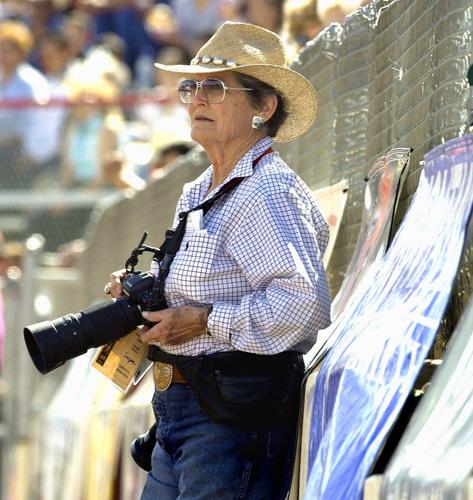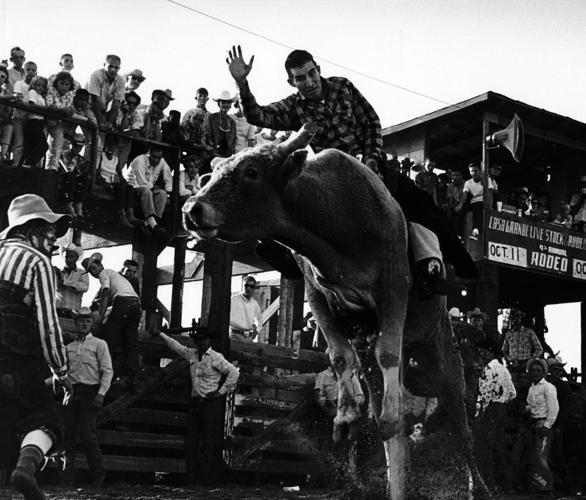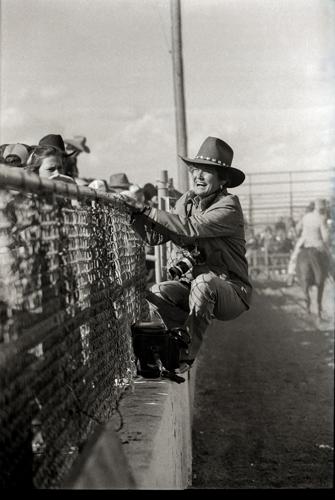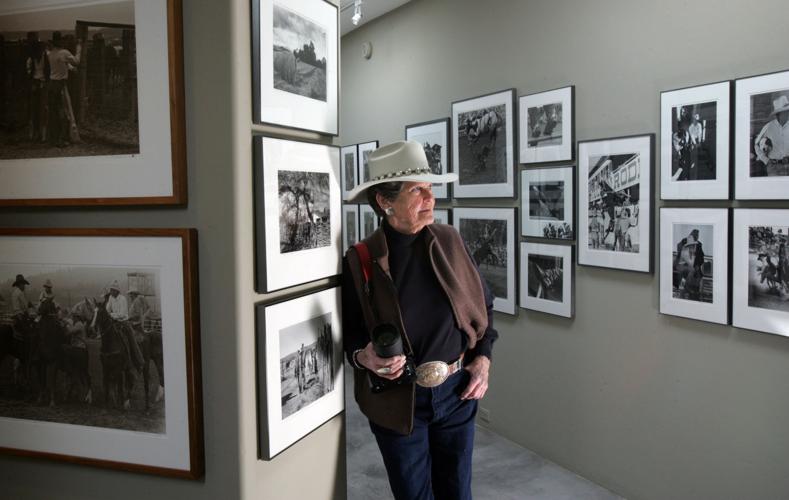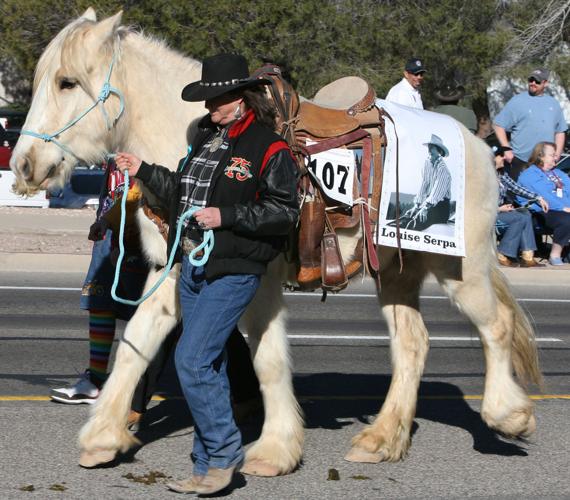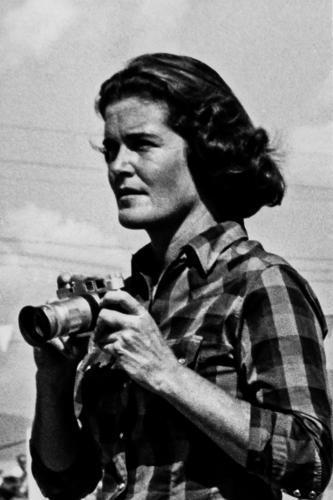It’s rodeo time in Tucson. Every February since 1925, Tucson has celebrated the rodeo with the best competition in the country. We memorialize these fearless performers through photographs taken by the most courageous, daring photographers to enter the arena.
One of the most renowned rodeo photographers was Louise Serpa, who shot the Tucson Rodeo every year from 1963 until 2011. Louise died in 2012 and her story was first printed in this column in 2015. She deserves another look before the dust settles on the 92nd Annual La Fiesta de Los Vaqueros, particularly since Louise will be inducted into the Arizona Women’s Hall of Fame on March 23.
Born in New York City on December 15, 1925, Louise could not wait to get out of town, often complaining she was born “in the wrong place, to the wrong woman, at the wrong time.”
She went west after graduating from high school in 1943 to work on a dude ranch scrubbing toilets, waiting tables and wrangling cattle, all while falling in love with a handsome cowboy who loved to rodeo.
People are also reading…
Reluctantly, Louise returned to New York, obtained a degree in music from prestigious Vassar College (she had a wonderful singing voice), and married a Yale man. The love affair with the cowboy, however, continued for many years.
When her first marriage faltered, Louise headed west again, where she met another cowboy, Gordon “Tex” Serpa. The couple married and settled on a sheep ranch in Ashland, Oregon, where Louise had two daughters, Lauren and Mia, before learning of her husband’s infidelity.
She left Oregon with her young children and settled in Tucson. Her introduction to photographing rodeos came about after a friend invited her to watch his children participate in a junior rodeo competition.
Using a cheap drugstore camera, Louise began photographing youngsters as they bounced and bucked on small sheep and calves, then sold the pictures to proud parents for 75¢ each, beginning a career that would take her to the highest pinnacles of rodeo photography.
At first she was relegated to shooting outside the rodeo arena. In 1963 she earned her Rodeo Cowboys Association press card, becoming the first woman sanctioned to shoot inside the fenced arena grounds.
She traveled to almost every rodeo in Arizona, getting up close with many a bucking horse and raging bull as she closed in to get the best shot. She survived one devastating encounter with a bull that caught her in the seat of the pants and tossed her about 8 feet in the air. When she landed, the bull shoved her into the ground, breaking her sternum along with several ribs. She continued to shoot the rodeo before heading to the hospital, and was back in the arena the next day.
Louise expanded her expertise to photographing cutting shows, polo matches and eventually found herself shooting England’s prestigious Grand National Horse Race and the Dublin Horse Show in 1970, the first woman allowed to take pictures on the grounds of these centuries-old events. In 1975, she photographed the Sydney Royal Easter Show, a celebration of Australian culture, again believed the first woman to ever do so.
In 1982 fashion photographer Bruce Weber saw some of Louise’s photographs while shooting an advertising spread in Tucson. He was so taken with the vividness and stark reality of her pictures that he insisted she come to New York for an exhibition. He arranged a showing of her work in New York City, spread her name throughout the photography community, and even used her as a model when, as Louise said, “he needed old age and wrinkles.”
In 1994, Aperture Publishers produced a book of Louise’s photographs entitled Rodeo. She selected some of her best shots of cowboys hanging onto bucking horses and struggling to stay atop outraged bulls, calf-roping events, and death-defying buckboard races.
In 1999, Louise was inducted into the National Cowgirl Hall of Fame, and in 2002 she received the Tad Lucas Award from the National Cowboy & Western Heritage Museum, presented “to a woman who has done outstanding work in the sport of rodeo.” The Pima County Sports Hall of Fame honored her in 2005.
In 2006, Louise was chosen grand marshal of the Tucson Rodeo Parade. She was the first grand marshal to ride a horse in the parade instead of sitting comfortably in the back of a horse-drawn carriage, even though Louise admitted, “I ride like a loose sack of grain.”
Louise was diagnosed with cancer in 2008, but even as she underwent chemotherapy treatments, lost her hair, and walked with a cane, she never stopped snapping pictures. However, since she was now over 80 years old and had not scrambled under a fence retreating from a charging bull since 2005, she refused to enter the arena.
According to rodeo manager Gary Williams, “We built a perch for her, a platform at the same spot, and put her name on it. After she took photos, she got down off the trash can and stood on risers behind the chutes.” Louise continued to photograph the Tucson Rodeo through 2011, when she finally let go of her camera and hung up her hat.
Louise died Jan. 5, 2012, at the age of 86.
She had opened doors for women in photography as well as in rodeo. She left a heritage of amazing images, pictures that tell the story of rodeo, the power and the prowess of animals as engaged in the sport as is the cowboy.
If future rodeo photographers learn anything from her determination and expertise behind the camera, they will enter the arena with wary confidence, one eye on the animal and the other glued to the camera. They will have to be quick on their feet and not afraid to get more than a little dirty as they dodge for safety.
And before the dust settles, they will remember the woman who often uttered the words that made her one of the most famous rodeo photographers, “Never don’t pay attention.”
Jan Cleere is the author of several historical nonfiction books about the early people of the Southwest, including the biography, “Never Don’t Pay Attention: The Life of Rodeo Photographer Louise L. Serpa.” Email her at Jan@JanCleere.com.



